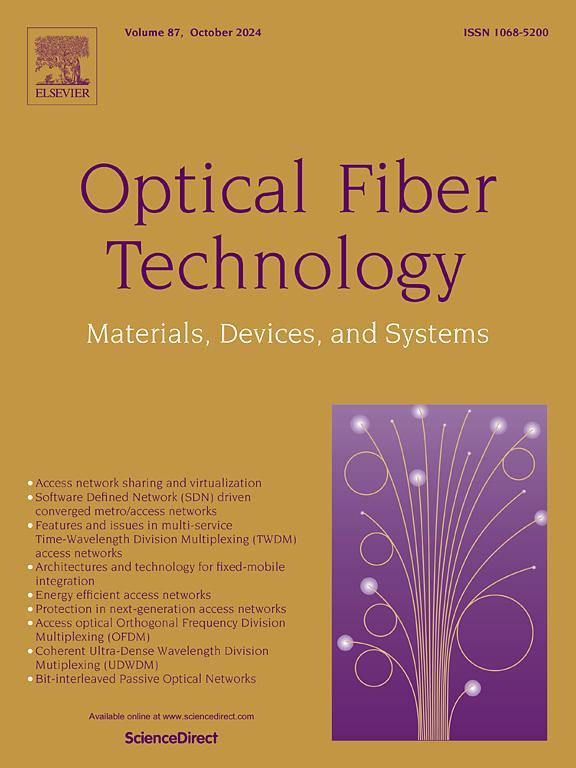Fast, accurate and simple method for measuring the chromatic dispersion of optical fibers using a single-arm interferometer and a frequency comb
IF 2.7
3区 计算机科学
Q2 ENGINEERING, ELECTRICAL & ELECTRONIC
引用次数: 0
Abstract
We propose and study a novel method for measuring the chromatic dispersion parameter (D) of optical fibers by means of a single-arm three-wave interferometer (SAI) and a fiber femtosecond frequency comb (FFFC). The FFFC is frequency locked to a single-ytterbium-ion optical standard and employed as a source of highly stable and broadband laser radiation. The FFFC spectrum ranges from 1 to 2 μm, which is the most demanded range in fiber optics. The theoretical model developed in the work is used to derive simple analytical expressions for the parameter D, taking into account the dispersion slope (DS). To verify the method, the parameter D is measured for a standard single-mode SMF-28 fiber with a length of 1.23 m. At a wavelength of 1550 nm, the value of D has been found to be approximately 16.6 ps/(nm∙km) with taking into account the DS. The root mean square error of measurements is 0.86 ps/(nm∙km). Another key feature of the method is that it enables accurate measurements of the parameter D across a broad spectral range in a relatively short time. All these features make the proposed method very attractive for a wide scope of applications in fiber-optic technology.
使用单臂干涉仪和频率梳测量光纤色散的快速、准确和简单的方法
提出并研究了一种利用单臂三波干涉仪(SAI)和光纤飞秒频率梳(FFFC)测量光纤色散参数(D)的新方法。FFFC被频率锁定到单镱离子光学标准,并被用作高稳定和宽带激光辐射的源。FFFC光谱范围为1 ~ 2 μm,是光纤中最需要的范围。利用本文建立的理论模型,推导出考虑色散斜率(DS)的参数D的简单解析表达式。为了验证该方法,测量了长度为1.23 m的标准单模SMF-28光纤的参数D。在1550 nm波长处,考虑到DS, D的值约为16.6 ps/(nm∙km)。测量结果的均方根误差为0.86 ps/(nm∙km)。该方法的另一个关键特征是它能够在相对较短的时间内在宽光谱范围内精确测量参数D。这些特点使得该方法在光纤技术中具有广泛的应用前景。
本文章由计算机程序翻译,如有差异,请以英文原文为准。
求助全文
约1分钟内获得全文
求助全文
来源期刊

Optical Fiber Technology
工程技术-电信学
CiteScore
4.80
自引率
11.10%
发文量
327
审稿时长
63 days
期刊介绍:
Innovations in optical fiber technology are revolutionizing world communications. Newly developed fiber amplifiers allow for direct transmission of high-speed signals over transcontinental distances without the need for electronic regeneration. Optical fibers find new applications in data processing. The impact of fiber materials, devices, and systems on communications in the coming decades will create an abundance of primary literature and the need for up-to-date reviews.
Optical Fiber Technology: Materials, Devices, and Systems is a new cutting-edge journal designed to fill a need in this rapidly evolving field for speedy publication of regular length papers. Both theoretical and experimental papers on fiber materials, devices, and system performance evaluation and measurements are eligible, with emphasis on practical applications.
 求助内容:
求助内容: 应助结果提醒方式:
应助结果提醒方式:


